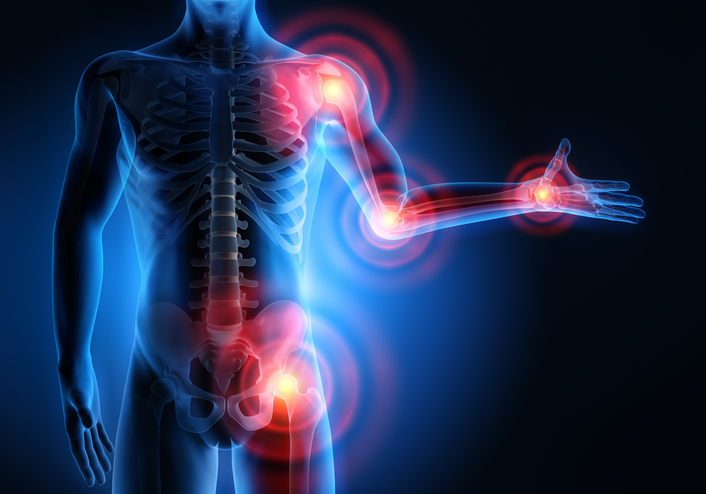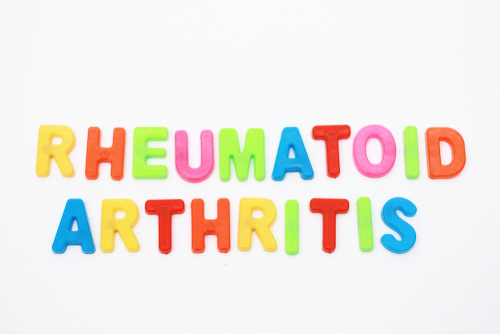
Here are the top stories covered by DocWire News this week in the Rheumatology section. In this edition, read about total joint arthroplasty (TJA) outcomes in rheumatoid arthritis (RA) patients, why ankylosing spondylitis (AS) patients could benefit from quitting smoking, mobilization with movement in knee osteoarthritis, and how different supplements affect muscle building in older adults.
A new study assessed risk factors associated with worse pain and functional outcomes in rheumatoid arthritis (RA) patients who underwent total hip arthroplasty (THA) or total knee arthroplasty (TKA) one year postoperatively. Final analysis included 122 RA patients: 56 THA patients and 66 TKA patients. Overall, 117 patients reported their flare status; more than half (n = 68, 58.1%) experienced a flare within six weeks of surgery, and of these patients, 37 (54.41%) had flare at baseline. Patients with flares were more likely to be on biologics and glucocorticoids, but methotrexate use did not differ between groups. Patients with flares, compared to those without, had higher baseline disease activity and significantly worse Hip and Knee Osteoarthritis/disability and injury Outcome Scores (HOOS/KOOS) scores for pain and function. A significant negative correlation was observed between baseline DAS28 and one-year HOOS/KOOS function, suggesting that patients with lower disease activity had better pain and function. Functional outcomes did not largely differ between patients who did and did not report postoperative flares. In univariate analyses, white race, body mass index [BMI], flare, DAS28, and baseline HOOS/KOOS pain and function were predictive of one-year HOOS/KOOS pain; in multivariate analyses, when adjusting for clinical characteristics, DAS28 and BMI remained predictive of one-year HOOS/KOOS pain and function.
Patients with ankylosing spondylitis could benefit from smoking cessation. A total of 92 patients were stratified by smoking status (smokers, group 1, n = 54; nonsmokers, group 2, n = 38). The smoking group was further stratified by those who did (group 1a, n = 17) and did not (group 1b, n = 37) quit smoking. Baseline and six-month data were compared for groups 1a and 1b. After six months, no significant differences were observed between groups 1a and 1b, except Bath Ankylosing Spondylitis Disease Activity Index (BASDAI), which was significantly lower in group 1a than 1b. From baseline to six months in group 1a, significant improvements were observed in BASDAI, Bath Ankylosing Spondylitis Functional Index, chest expansion, and Ankylosing Spondylitis Quality of Life, as well as subparameters physical function, physical role strength, power/live/vitality, social functioning, pain, and general health perception of SF-36. Forced expiratory volume in the first second and forced vital capacity also significantly improved at the six-month mark.
A randomized trial observed significant benefits for patients with osteoarthritis (OA) of the knee treated with mobilization with movement (MWM) compared to sham treatment. Knee OA patients were randomized to either MWM treatment or sham MWM. The primary outcome measures included visual analog scale (VAS) score for pain, the pressure pain threshold (PPT) test, the Western Ontario and McMaster Universities Osteoarthritis (WOMAC) Index, timed up and go (TUG) test, knee strength, and knee range of motion (ROM). Patients were evaluated at baseline, immediately after intervention, and two days post-intervention. Patients who received MWM treatment had greater immediate pain improvement; the researchers reported a mean difference of –2.2. PPT improvements were observed in the knee (176) and shoulder (212). Improvements were also observed in TUG time (–1.6), knee flexor (2.0) and extensor strength (5.7), and knee flexion ROM (12.8), although not in knee extension ROM (–0.8). After two days, MWM patients, compared to the sham cohort, had greater improvements in pain (–1.0), PPT at the shoulder (107), TUG time (–0.9), knee flexor (0.9) and extensor strength (2.9), and knee flexion ROM (8.3).
Previous research has established that older adults can significantly benefit from strength training. Two recent studies evaluated the effects of vitamin D and metformin on muscle building and strength. Read more here about why vitamin D made the “yes” list and why metformin, which has been proven to be beneficial in the treatment and prevention of diabetes, may not be conducive to muscle building.







 © 2025 Mashup Media, LLC, a Formedics Property. All Rights Reserved.
© 2025 Mashup Media, LLC, a Formedics Property. All Rights Reserved.